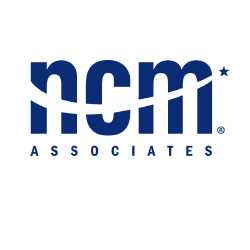Training is Necessary, But Not Sufficient

Let’s take a look at what training is and is not, along with the real purpose of training: learning and development.
Learning is an individual and organizational effort aimed at helping employees acquire knowledge and skills required for the efficient execution of their current jobs.
Development provides on-the-job activities that allow employees to increase their knowledge, skills, and performance so they can produce work of increasing importance to the organization.
A McKinsey study of companies’ opinions about problems with learning and development showed that:
- 59% of senior managers don’t spend enough high-quality time developing their people
- 45% of line managers are not sufficiently committed to development of people’s capabilities and careers
Deloitte’s 2014 Human Capital Trends report stated that fewer than 45% of businesses have a written plan for learning, largely due to lack of leadership and lack of planning. At the same time, the report states that employee development is one of the biggest factors in employee retention and engagement.
Robert Mager, one of the world’s leading authorities on the use of training and other techniques to solve employee performance problems, makes two important points about training:
1. Skill alone is not enough
Skill, by itself, isn’t enough to guarantee on-the-job performance. In addition to skill, the employee needs:
- Opportunity to learn and practice new skills
- A supportive environment in which to practice those skills
- Self confidence
Here’s another way to think of on-the-job performance: it’s a house that takes TIME to build and maintain.
Training provides knowledge, understanding, skills, and a certain level of confidence.
Incentives on the job provide everything from rewards and recognition, to the increased motivation and confidence that come with a job well done.
Management provides coaching, feedback, direction, support, and opportunity to practice the new skills.
Environment is the setting in which the new skills are practiced—the tools, equipment, and other resources to do the job, along with systems, processes, and a supportive culture.
2. Training can’t guarantee on-the-job performance
Training can guarantee knowledge and skill, and can assist with self-confidence. But only managers can be held accountable for on-the-job performance.
Your employees can attend the best, most brilliant, most engaging training in the world, and they can come back to work all pumped up and ready to make a difference. But if incentives, management support, and environmental support are lacking — any of the other pillars of the house — then the house will collapse. Training will have been wasted. And, in many cases, the employee will be extremely dissatisfied because they feel the effort they put into learning new skills was wasted.
How does this apply to the retail automotive industry?
Many retail automotive businesses lack written policies, procedures, and processes, particularly when it comes to learning and development. Formalized recruiting, hiring, orientation, job descriptions, performance review processes, and training are at low levels compared with the average American business. In addition, low levels of employee training by the dealership, as evidenced by training dollars spent, contribute to lack of employee engagement and significant annual employee turnover.
NCM Associates’ proprietary composite for 2014 showed that dealers’ training dollars spent were:
- 0.8% of Gross Profit
- 0.107% of Sales (with a Benchmark of 0.102%)
Compare training expenditures with the percentage of gross profit spent on advertising (1.6%) and you’ll be faced with the question, “If I spend twice as much money on advertising as I do training, are my people as prepared as they need to be when they’re doing their job? Is my spending in balance? Will my people be prepared to deliver the best possible customer service?”
The reality is, that on-the-job performance begins with training, but it can’t end with training. As managers and leaders, we must be prepared to do our part to ensure the training effort produces the results we want.
